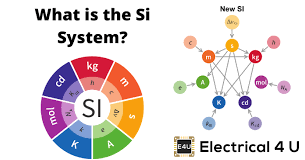Triple point
What is the triple point?
The triple point is a term in the field of thermodynamics that refers to the temperature and pressure in which three phases of a substance exist simultaneously in a state of thermodynamic equilibrium. This point exists for all substances, although the conditions in which they are achieved vary enormously between each one. triple point of water

A triple point can also involve more than one phase of the same type for a specific substance; that is, two different solid, fluid or gas phases are observed. Helium, in particular its isotope helium-4, is a good example of a triple point involving two individual fluid phases: normal fluid and superfluid.
What is the triple point used for and when is it used?
The triple point of water is used to define the kelvin, the base unit of thermodynamic temperature in the International System of Units (SI). This value is set by definition rather than measured.
The triple points of each substance can be observed with the use of phase diagrams, which are plotted graphs that allow to demonstrate the limiting conditions of the solid, liquid, gaseous phases (and others, in special cases) of a substance while it is they exert changes in temperature, pressure and / or solubility.
A substance can be found at its melting point at which solid meets liquid; it can also be found at its boiling point where liquid meets gas. However, it is at the triple point that the three phases are achieved. These diagrams will be different for each substance, as will be seen later. triple point of water
The triple point can be used effectively in the calibration of thermometers, making use of triple point cells.
These are samples of substances in isolated conditions (inside glass “cells”) that are at their triple point with known temperature and pressure conditions, and thus facilitate the study of the precision of the thermometer measurements.
The study of this concept has also been used in the exploration of the planet Mars , in which an attempt was made to know the sea level during missions that were carried out in the 1970s.
Triple point of water triple point of water

The precise conditions of pressure and temperature at which water coexists in its three equilibrium phases – liquid water, ice and steam – occur at a temperature of exactly 273.16 K (0.01 ºC) and a partial pressure of vapor of 611.656 pascals (0.00603659 atm). triple point of water
At this point the conversion of the substance to any of the three phases is possible with minimal changes in its temperature or pressure. Even though the total pressure of the system could be above that required for the triple point, if the partial pressure of vapor is at 611.656 Pa, the system will reach the triple point in the same way. triple point of water
It is possible to observe in the previous figure the representation of the triple point (or triple point , in English) of a substance whose diagram is similar to that of water, according to the temperature and pressure required to reach this value.
In the case of water, this point corresponds to the minimum pressure at which liquid water can exist. At pressures less than this triple point (for example, in a vacuum) and when constant pressure heating is used, solid ice will convert directly to water vapor without passing through liquid; This is a process called sublimation. triple point of water
Beyond this minimum pressure (P tp ), the ice will first melt to form liquid water, and only there will it evaporate or boil to form vapor.
For many substances the temperature value at its triple point is the minimum temperature at which the liquid phase can exist, but this does not happen in the case of water. For water this does not happen, since the melting point of ice decreases as a function of pressure, as shown by the green dotted line in the previous figure. triple point of water
In high pressure phases, the water has a fairly complex phase diagram, in which fifteen known ice phases are shown (at different temperatures and pressures), in addition to ten different triple points that are visualized in the following figure:
It can be noted that, under high pressure conditions, ice can exist in equilibrium with the liquid; the diagram shows that melting points increase with pressure. At constant low temperatures and increasing pressure, the vapor can transform directly into ice, without going through the liquid phase.
Also represented in this diagram are the different conditions that occur on the planets where the triple point has been studied (Earth at sea level and in the equatorial zone of Mars).
The diagram makes it clear that the triple point varies depending on the location for reasons of atmospheric pressure and temperature, and not just because of the experimenter’s intervention. triple point of water
Cyclohexane triple point
Cyclohexane is a cycloalkane that has the molecular formula of C 6 H 12 . This substance has the peculiarity of having triple point conditions that can be easily reproduced, as in the case of water, since this point is located at a temperature of 279.47 K and a pressure of 5.388 kPa. triple point of water
Under these conditions, the compound has been observed boiling, solidifying and melting with minimal changes in temperature and pressure.
Benzene triple point triple point of water
In a case similar to cyclohexane, benzene (an organic compound with the chemical formula C 6 H 6 ) has triple point conditions that are easily reproducible in a laboratory.
Its values are 278.5 K and 4.83 kPa, so experimentation with this component at the beginner level is also common.
